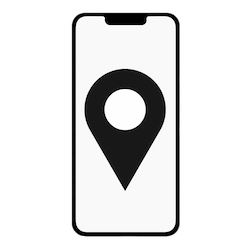How to Prove You Are Not at Fault in a Car Accident
A Comprehensive Guide
Being involved in a car accident is stressful, and the aftermath can be a maze of insurance claims, potential legal action, and vehicle repairs. However, one of the most critical aspects post-accident is determining fault. You must gather evidence to support your claim if you believe you were not at fault. This article delves into how to conclusively prove you’re not the responsible party in an accident.

Understand the Importance of the Police Report The On-Scene Assessment:
Law enforcement should be called when an accident occurs, especially if there are injuries or significant property damage. The attending officer will:
- Interview drivers, passengers, and witnesses
- Document road conditions, damage to vehicles, and other critical details
- Issue traffic citations if any laws were violated
Obtaining the Report: Always request a copy of the police report. While not infallible, this document provides an objective third-party perspective of the accident and can be instrumental when proving fault.
Gather Photographic and Video Evidence
At the Scene: If it’s safe, take clear photos or videos of:
- All vehicles involved, from multiple angles
- Skid marks, broken glass, and other debris
- Road signs, traffic lights, and any obstructions
- Any visible injuries you or your passengers might have sustained
Surveillance Cameras: In urban areas or busy intersections, nearby businesses or traffic cameras may have captured the incident. If possible, request this footage promptly, as it might be erased or recorded.
Document Eyewitness Testimony
Witnesses can offer an unbiased perspective, making their accounts extremely valuable. Always ensure you:
- Approach potential witnesses calmly and respectfully
- Obtain their contact information
- If they are willing, ask them to provide a brief account of what they saw
Detail Your Version of Events
While the accident is fresh in your mind:
- Write down a thorough account of what happened. Include details such as the direction you were traveling, the speed, the traffic conditions, and any evasive actions you took.
- This personal record can assist you when recounting events to your insurance company or if you decide to seek legal counsel.
Seek Out Expert Opinions
In more contentious or complicated accidents, experts might be required:
- Accident Reconstruction Specialists: They can recreate the scene, often using advanced software, to determine the sequence of events and the likely at-fault party.
- Mechanics: If there’s a question about brake failure, malfunctioning signals, or other vehicular issues, a mechanic can provide insights into whether your car (or the other party’s) had any underlying problems that contributed to the accident.
Review Relevant Traffic Laws
Understanding the local traffic laws can support your claim. If the other driver violated a traffic law, it strengthens your argument. Resources to consult include:
- State or municipal vehicle codes
- Local DMV or equivalent authority
- Legal databases or local legal counsel
Document All Communication
Keep records of all communications related to the accident:
- Save text messages and emails, and note the details of phone conversations.
- Always be cautious and avoid making statements that could be misconstrued or used against you.
Consider Hiring an Attorney
In situations where fault is disputed, having legal counsel can be beneficial. An experienced attorney can:
- Offer insights into local laws and regulations
- Negotiate with insurance companies on your behalf
- Represent you if the case goes to court
Report the Accident to Your Insurance Company
Even if you believe you’re not at fault:
- Notify your insurance company of the accident promptly.
- Provide them with all the evidence you’ve gathered.
- Avoid admitting guilt or making speculative statements.
Conclusion
Proving you are not at fault in a car accident involves a meticulous collection of evidence, a clear understanding of local traffic laws, and often a touch of patience. The key lies in being proactive, organized, and, when necessary, seeking out expert advice. By diligently following these steps, you enhance your chances of presenting a robust and evidence-backed case, ensuring that justice is served and the correct at-fault party is held accountable.
